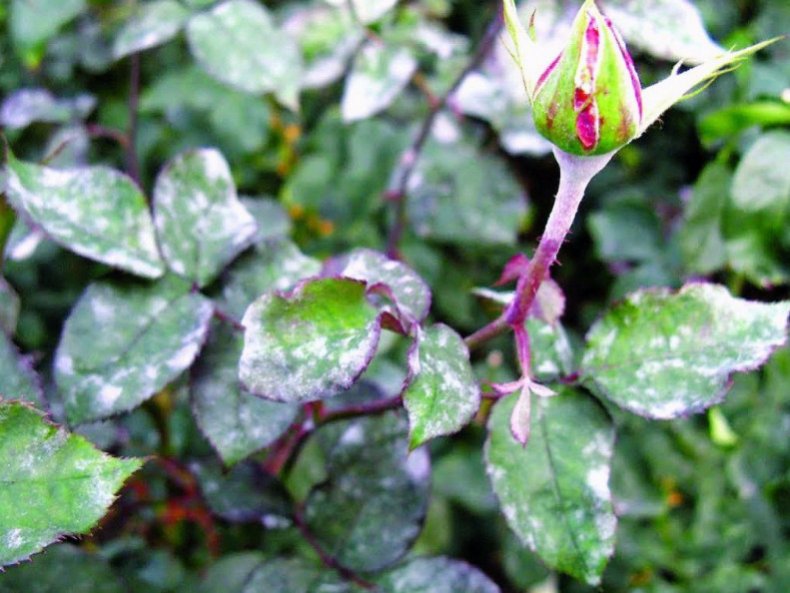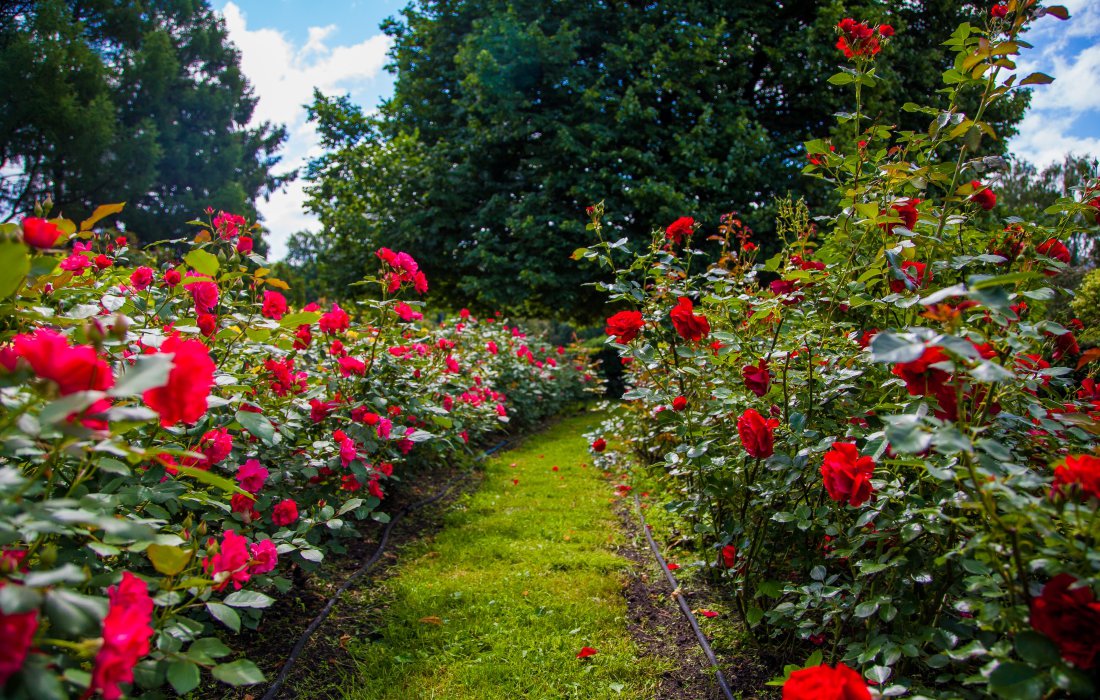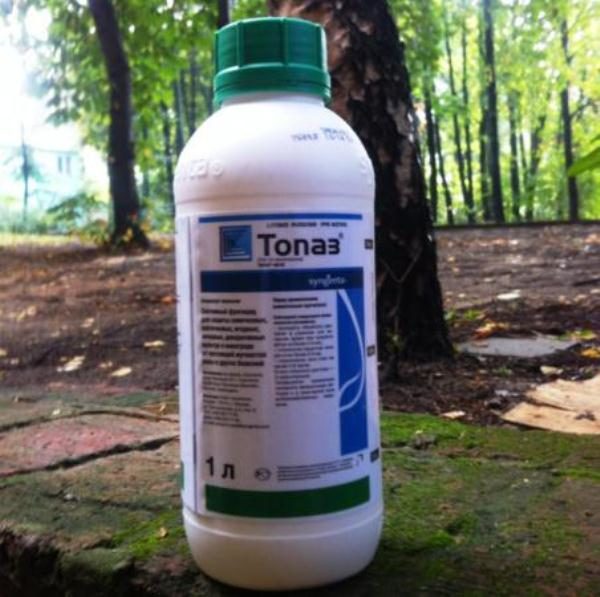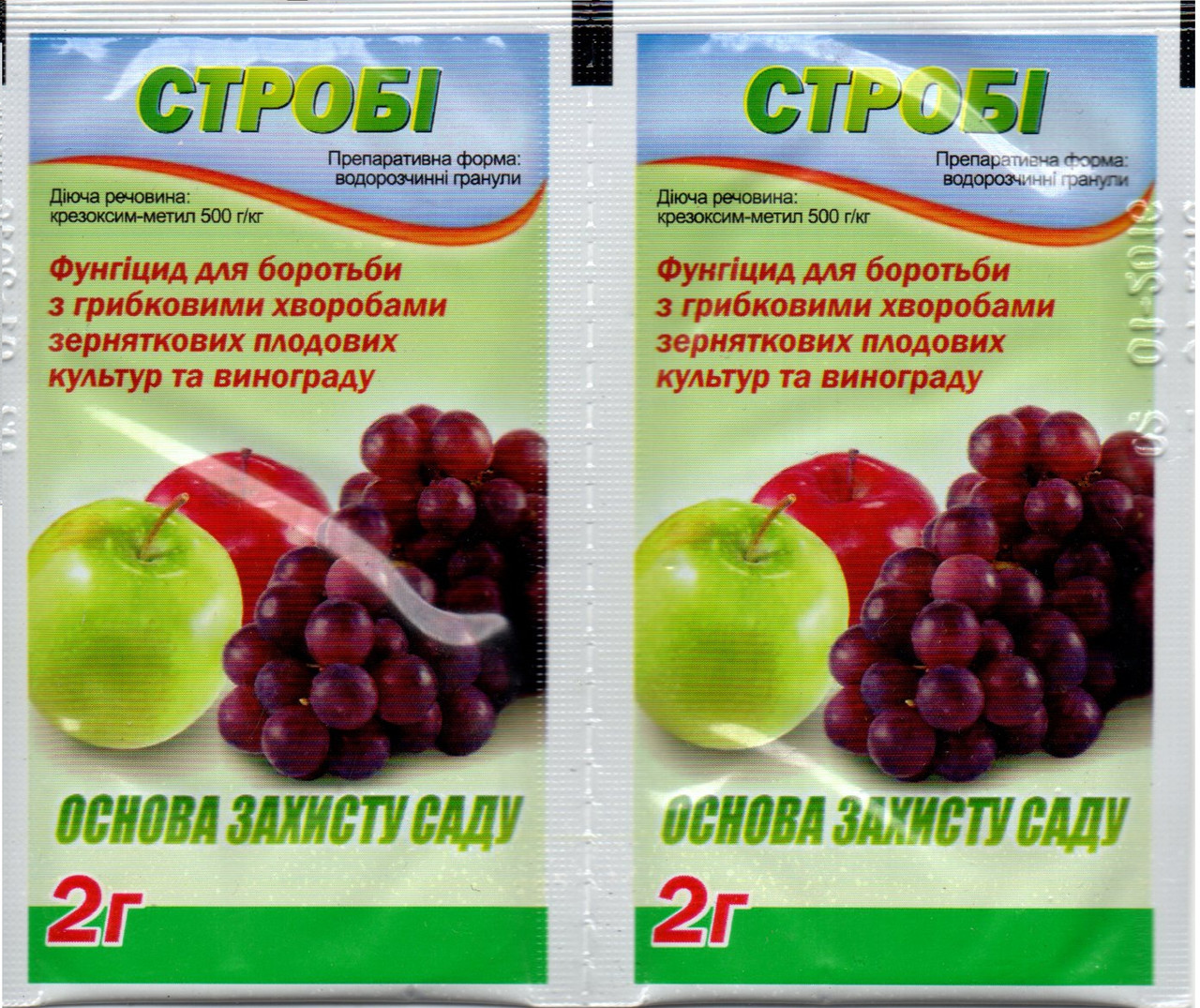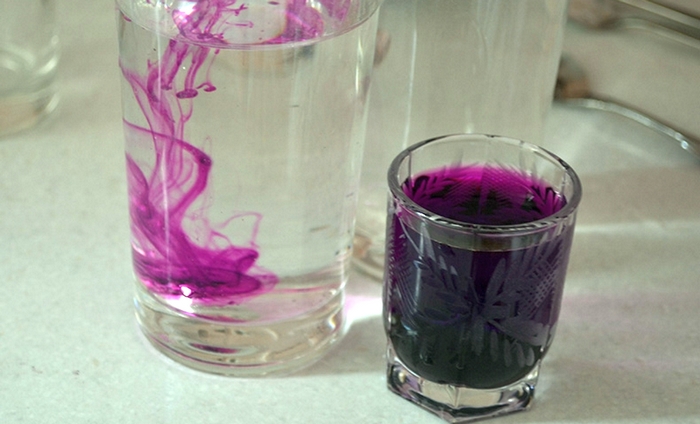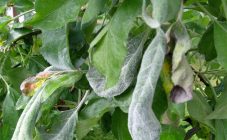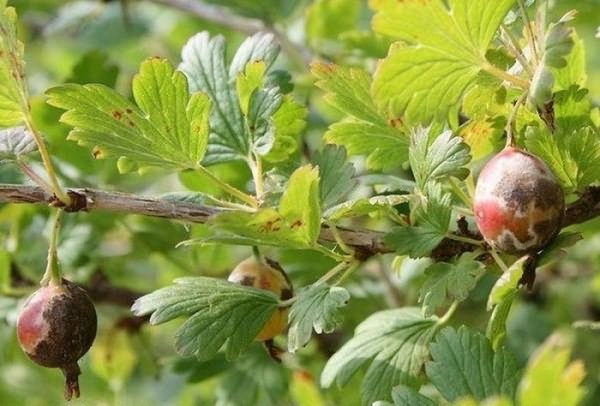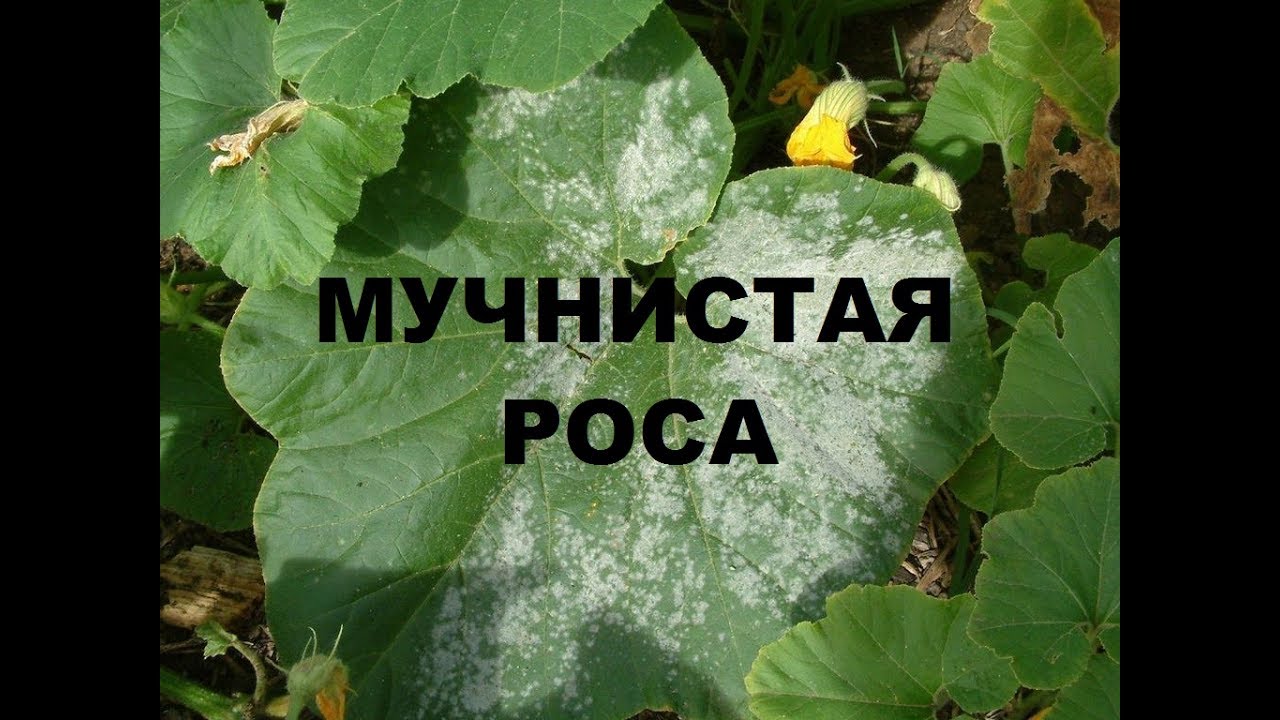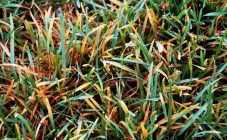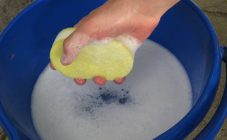Content:
Fans of rose cultivation are well aware of how common the fungal disease of these flowers is powdery mildew. The disease in a short time causes enormous damage to flower beds, making the bushes unsightly, and if you do not take action in time, it destroys the plants completely.
Powdery mildew on roses
The causative agent of a dangerous disease is the powdery mildew Sphaerotheca pannosa. On the affected plant, the leaves are covered with spots of a whitish, powdery hue. It only seems that they can be simply erased with your finger. This is not true. White bloom on the leaves of the rose gradually grows, capturing neighboring shoots and bushes, flowers. The leaves begin to look twisted, dry up, the roses are in danger of death.
The formation of a mealy plaque is associated with the growth of the mycelium of the fungus, which is formed by conidia - spores. With their help, the fungus reproduces asexually in the summer. The wind easily transfers these spores to all neighboring bushes. The fungus will last for several days under favorable conditions to cover all the leaves on the rose. You should act very quickly, otherwise the bush will die.
If the disease develops on autumn foliage, then the plant will freeze out in winter. The plaque is denser in autumn. Dark spots appear on it - these are clestothecia, the so-called fruiting bodies. In them, disputes are formed, but in a different way, sexually. Due to this mechanism, powdery mildew easily waits out frosts in order to actively reproduce again in the spring.
Risk factors
The optimum temperature for the spread of the fungus is 20-25 degrees Celsius, and the humidity should be 80% or higher. A similar combination of favorable factors occurs when:
- It rained for a long time, and then the sun and warmth returned. The puddles are actively evaporating, the air humidity reaches its maximum values.
- The rose garden is too thick, so ventilation is difficult. Especially true for climbing roses. Between individual bushes, areas with high humidity are formed, suitable for the propagation of powdery mildew.
- Due to the large difference between daytime and nighttime temperatures, more dew falls than usual.
- A lot of nitrogen-containing fertilizers have been introduced into the soil, thanks to which abundant young growth has been formed, which is more suffering from various infectious diseases.
Powdery mildew on roses: how to treat in summer
It is impossible to hesitate with the treatment of powdery mildew on roses. You need to take action right away. Manufacturers produce a lot of specialized tools with which they fight a dangerous fungal disease in various ways.
Contact fungicides are especially popular. They are used to treat shoots and leaves. The pathogens die as soon as they come into contact with the fungicide. This extensive group of funds includes sulfur and preparations from it, Bordeaux mixture, copper and iron vitriol. The cost of these funds is affordable, and you can find them on free sale in any locality.
When treating any plantings with fungicides, the following general rules should be strictly observed:
- Even before using this or that drug, the plantings are processed. All affected parts of the roses must be carefully removed. It will not be possible to cure them, so they are cut off with a pruner and must be burned. Also do with weeds and grass in a flower bed.
- Spraying with a fungicide solution should be carried out in the early morning or late evening, at dawn or at sunset. The ideal weather is dry and calm. This is done so that the moisture on the bushes dries out until the sunniest hours, since the drops can cause burns to the delicate leaves and flower petals.
- The agent should evenly fall on all parts of the plant: leaves, stems, flowers. In this case, the leaves must be abundantly moistened from the outside and inside.
- Any fungal disease has the ability to develop resistance to specific drugs. This means that fungicides need to be alternated, and not use in each case only one product you like.
There is a fairly wide selection of powdery mildew control products on the market. They also help against diseases such as downy mildew, scab, and mold. It is enough to contact the seller in a specialized store to get an idea of the available range. Next, we consider the best tools that, according to gardeners, have proven themselves well in practice.
Colloidal sulfur
It is recommended to use it at the very initial stages of the development of the disease, when a white bloom on the roses is barely noticeable. If the gardener finds suspicious spots on 1-2 bushes, then it's time to treat the flower bed with a solution of colloidal sulfur. It is a contact fungicide. Manufacturers recommend dissolving 30 g of powder in 10 liters of water. The optimum air temperature at which the effectiveness of the product reaches its maximum value is 20 degrees Celsius.
Tiovit Jet
This is a ready-made contact preparation, in which sulfur accounts for 80%. It is used in the same way as colloidal sulfur should be used. The optimal concentration of the working solution recommended by the manufacturer is no more than 80 g of the drug per 10 liters of water.
Topaz
It is a systemic fungicide. Suitable for both prevention and treatment of fungal infections. The working solution should be prepared based on the recommended concentration: 2 ml of the drug per 5 liters of water. Re-processing, if necessary, is carried out after 2 weeks.
Speed
Systemic universal drug, acts by contact method. It is often used to prevent powdery mildew and to treat roses from it. Concentration: 1 ml of the product is diluted into 5 liters of water.
Raek
This is almost a complete analogue of Skor, but differs in a slightly longer period of action. Serves as good protection against powdery mildew for treated rose bushes over a wide temperature range.
Topsin M
It is used for preventive purposes, since the agent has a systemic mechanism of action. In order to combat powdery mildew, it is diluted in water: no more than 15 g of powder per 10 liters.
Strobe
Another means of systemic action. Since it affects not only powdery mildew, but also other diseases, it is used for preventive purposes. To achieve the desired effect, it is enough to dilute 2-4 g of the product produced in granules in 10 liters of water.
Folk remedies
In addition to the fungicides available for free sale, gardeners widely use folk methods of combating powdery mildew. They are highly effective as a prophylaxis, as well as when the disease is in its early stages. Moreover, the medicine can serve as a source of valuable nutrients for the bush and increase resistance to various diseases and pests.
Home remedies such as:
- A solution based on iodine and milk whey. To prepare the product, take 5 liters of water, add 10 drops of iodine and 1 liter of milk whey to it. It is necessary to spray rose bushes with such a composition 2-3 times a month. Milk whey not only protects plants from diseases, but also heals damaged areas, supplies the rose with valuable trace elements.
- Ash. 1 kg of wood ash sifted from large particles is poured into a bucket of clean water. You need to insist the remedy for 3 days. After the infusion is filtered and used for spraying. To prevent the liquid from dripping from the leaves, a little laundry soap is added to it especially for better adhesion. The sediment remaining after filtering is again diluted with a bucket of clean water and used for watering rose bushes.
- Baking soda, which is diluted in 5 liters of clean water. They also add a little laundry soap. Each leaf should be sprayed with this solution twice a month for preventive purposes. If traces of powdery mildew were found, then all the bushes are sprayed with a solution once a week at least 3 times in a row to get rid of the threat.
- Cow dung. Dilute with water in a ratio of 1 kg of manure to 3 liquids. You need to insist in the open air for 3 days. The resulting infusion is diluted with water in a 10-fold proportion and used to spray the leaves.
- Soda ash. Dilute with water: take 50 g of powder for 10 liters. Add the same amount of laundry soap. With a slightly warm homemade solution, you need to spray the roses twice with an interval of a week.
- Potassium permanganate solution. Dilute 3 g of powder in 10 l of water. You can spray with such a solution 3 times in a row in 2-3 days.
Powdery Mildew Prevention
The following simple agrotechnical techniques have proven their high efficiency:
- All affected or suspicious parts of the bushes in the fall must be collected, cut and burned. This will prevent the fungus from overwintering and spreading in the spring.
- Weed regularly around the roses, avoiding the growth of weeds, on which powdery mildew appears first. This will help save the street rose garden from most of the threats.
- Avoid sprinkling rose bushes. Roses love it and respond with active growth, but this method of watering creates a favorable environment for the spread of fungal spores.
- No need to thicken the landing. When planting new plants, the gaps recommended by the manufacturer of the planting material should be strictly observed. This will allow air to circulate freely in the rose garden.
- You should not use nitrogen-containing fertilizers in the second half of summer. Due to such fertilizers, young green mass, which is most vulnerable to powdery mildew, grows too actively.
- The introduction of potassium-phosphorus fertilizers helps to increase the resistance of the rose to the fungus (ordinary and downy mildew - LMR), thanks to which the shoots and buds ripen faster.
- In late autumn and early spring, the soil around the roses should be specially treated with copper-containing preparations.
- When choosing new varieties, you should pay attention to the manufacturer's instructions regarding the resistance of roses to powdery mildew.
The fungus is a serious threat to flowers, but it can and should be dealt with. For success, it is enough to pay attention to your rose garden at least once a week, but every bush must be carefully examined, even if it is indoor. If suspicious signs are identified, take action immediately.
